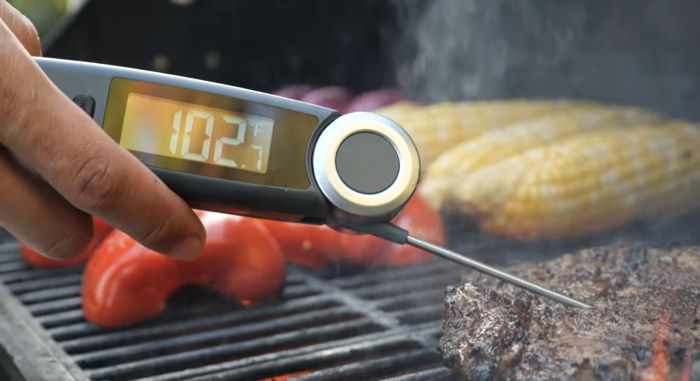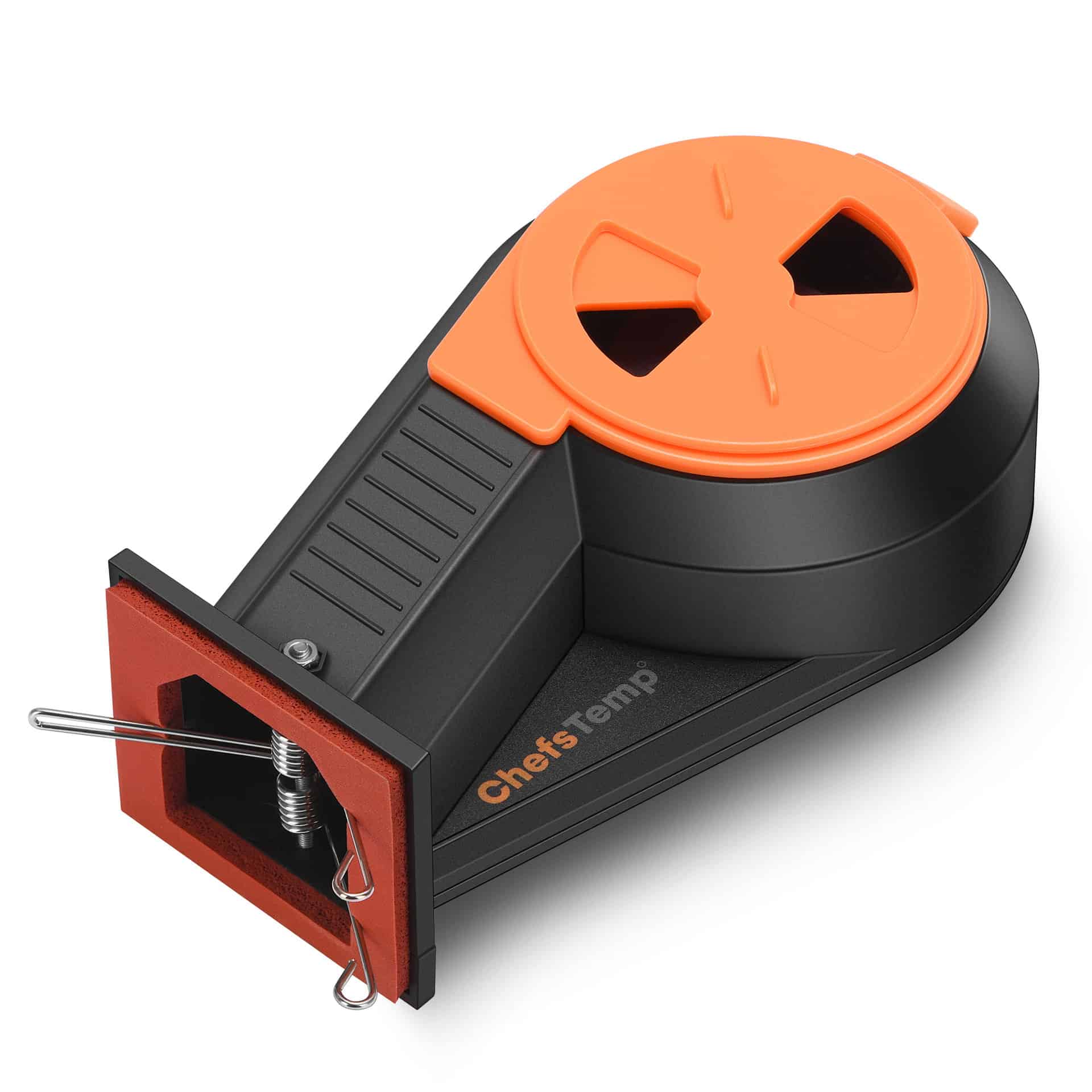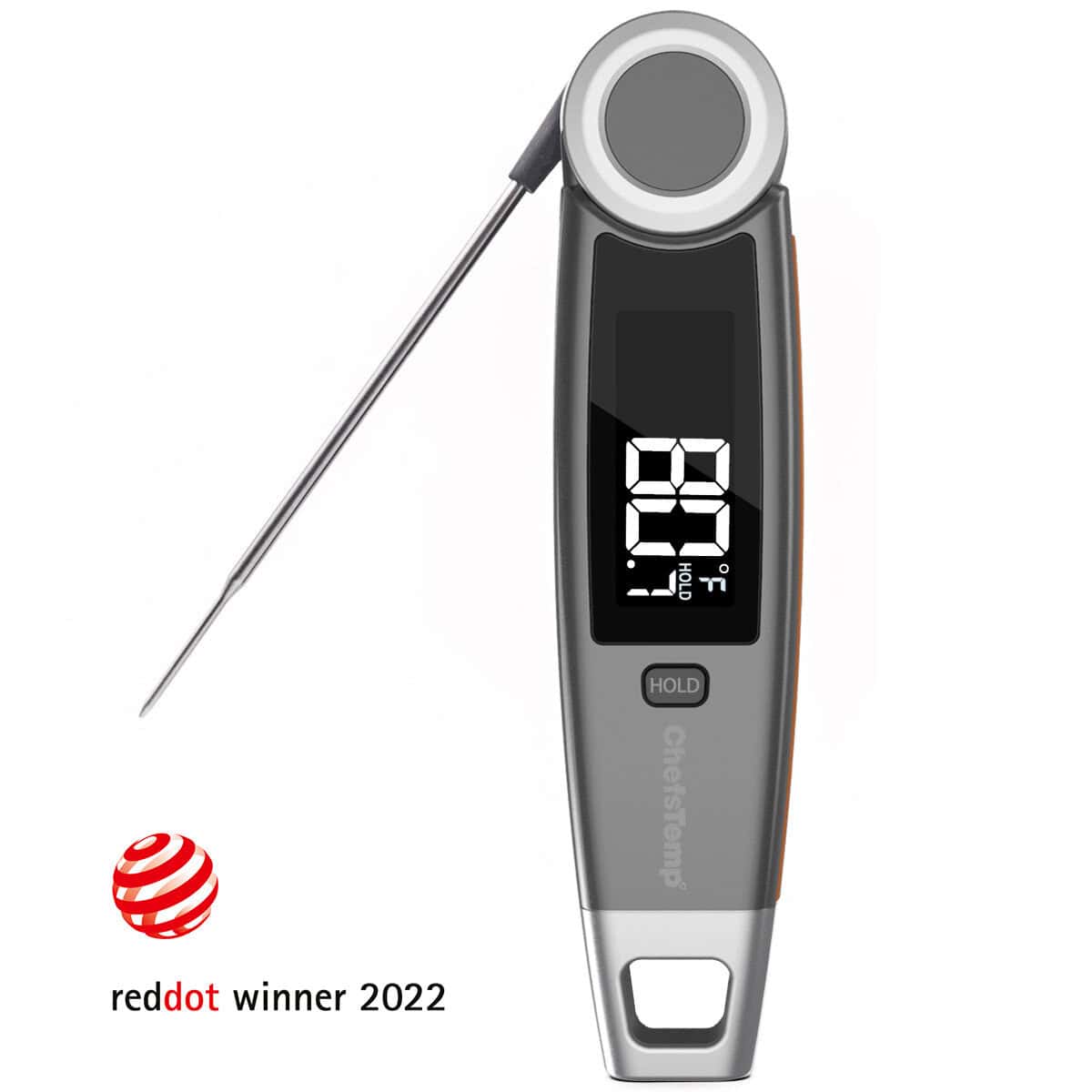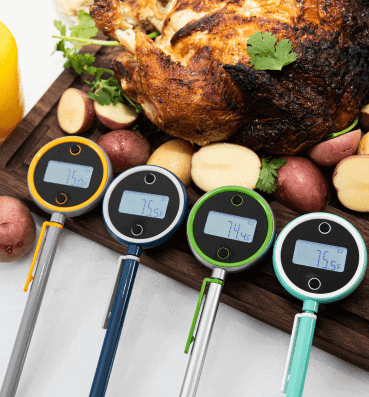
The Secret Weapon of Competitive Cooks: Unveiling the Food Thermometer Advantage
Have you ever wondered how your favorite restaurant always nails the perfect medium-rare steak, tender fall-off-the-bone ribs, juicy chicken, and mouthwatering pork roast? Believe it or not, they don’t just rely on their training and wealth of experience; they actually use a secret weapon called a food thermometer.
Food thermometers take the guesswork out of the kitchen, giving cooks, whether home cooks or top chefs, peace of mind and the assurance that the food they are working on will come out perfectly cooked. If you are serious about cooking, then it’s time to get acquainted with this game-changing tool.
Table of Contents
Relationship Between Flavor and Temperature
Flavor is a combination of sensory information, including taste, smell, and tactile information (the way food feels in your mouth). The human mouth has up to 8,000 taste buds, each of which houses 50 to 100 specialized sensory cells that detect taste. These taste buds determine how we taste food, allowing us to distinguish savoury, sweet, salty, bitter, sour, etc. The majority of these taste buds are on the tongue, but some are located on the roof of the mouth and throat.
Moreover, the taste buds are the reason why food tastes different at different temperatures. This is because our taste buds contain temperature-sensitive nerve endings. Since the temperature of food affects the volatility and solubility of flavors (i.e., warm food releases more aromatic compounds that contribute to taste perception), flavors are more intense at certain temperatures.
Moreover, the taste receptors respond differently at specific temperatures. Sweet and umami flavors, for example, are more pronounced at warmer temperatures. Bitter tastes, on the other hand, are more intense at cooler temperatures.
This is one of the reasons why restaurant cooks and professional chefs use temperature—to get food to the right temperature to impart the right flavors and taste in your mouth.

Why Do Cooks Use Thermometers for Cooking?
Aside from nailing the perfect taste and flavors, competitive cooks and professional chefs use thermometers for a lot of reasons.
Make Food Safe To Consume
While you may say you can tell food is still good to eat by just looking at its colour and texture, that is neither the most accurate nor the safest way to do it. For example, 25% of burgers will turn brown before reaching their safe internal temperature.
The Centers for Disease Control and Prevention (CDC) estimates that around 1 in every 6 Americans (about 48 million) gets sick from foodborne diseases each year. 128,000 of those are hospitalized, while 3,000 of them die. Seniors are more likely to suffer from foodborne diseases like salmonella and E. coli. A food thermometer, such as a meat thermometer, can significantly reduce the risk of this problem by ensuring food is cooked to the right temperature.
As said earlier, food thermometers remove the guesswork in cooking. They provide an accurate reading of the internal temperature of food. This accuracy is crucial to ensure that harmful bacteria and pathogens present in the food (salmonella, E. coli, etc.) are killed.
Also, different types of food require different temperatures to be cooked safely. To be effective in killing bacteria, poultry meat (chicken, turkey, etc.) should reach an internal temperature of 165°F (74°C). Steak, chops, and roast must reach 145°F (63°C). Ground meats (beef, pork, lamb) must be cooked up to 160°F (71°C), while fish must reach 145°F (63°C) internal temperature.
Moreover, thermometers ensure that food is kept out of the “danger zone,” which is between 40°F (4°C) and 140°F (60°C). The danger zone is the temperature at which bacteria can and will multiply rapidly. Bacteria thrive in this temperature range, doubling in number every 20 minutes.
Food Tastes Better
As discussed earlier, temperature affects the flavors of the food and how your taste buds get stimulated. This is where you need food thermometers, to get the right timing in your cooking.
A food thermometer will help you get the perfect doneness every time. Whether it’s a medium-rare steak or a fully-cooked full-size turkey, a thermometer ensures precise cooking without being undercooked or overdone, making a juicier and tastier dish. The same goes for baking; an accurate thermometer ensures bread and cakes are baked through.
Moreover, if you have been cooking for some time, you know that certain aromas and flavors in specific ingredients are released in particular temperature ranges, which makes the food smell and taste better.
Lastly, different cooking methods will require certain techniques. In grilling, for example, too much heat can cause the food to burn on the outside while leaving the inside undercooked. A thermometer will help you monitor the meat to ensure it’s properly cooked. The same goes with slow cooking, where ensuring the right temperature is required for tender, fall-apart meat without it drying out.

Tips for Cooking with Thermometers
Get the Right One
There are many different types of food thermometers, such as digital thermometers, instant-read, and probe thermometers. Digital thermometers are exactly as their name suggests; they come with a digital display that makes for easy temperature reading. Probe types are best for meat and larger items that need to be cooked at a specific temperature for a specific time. Instant-read thermometers provide temperature readings as quickly as 1.5 to 2 seconds, some even faster.
Calibrate Your Thermometer
Your kitchen tool is only as good as its condition, so ensure it works properly. Most thermometers come with an instruction manual on how to calibrate them. You can also check online for tips. The easiest way is to fill a glass with ice and add cold water. Dip the thermometer into the icy water without touching the side or bottom of the glass. Wait until the reading stabilizes. It should read 32°F (0°C).
If your thermometer doesn’t show 32°F (0°C), adjust or reset it. Refer to the product manual for instructions.
Insert It Right
You need to insert your thermometer correctly to get the most accurate reading. For meat, insert the thermometer into the thickest part of the meat, this will give you the internal temperature reading for the thickest part to ensure correct cooking. If you are roasting a turkey, insert the thermometer into the center of the turkey.
Wait for the Reading
Be patient and wait for the thermometer to do its job. Some can read the temperature as quickly as 1 second, while some may take 3 seconds. Familiarize yourself with the functions of your thermometer to ensure you get the most accurate reading.
Clean Your Thermometer
After every use, clean your thermometer thoroughly with soapy water then wipe it dry with a clean cloth. This will prevent cross-contamination and ensure your kitchen tool is ready for its next use.
The Takeaway
Cook like a competitive cook, take the guesswork out of your kitchen, and give yourself the advantage of precise and worry-free cooking by putting a food thermometer in your arsenal.
Discover Other ChefsTemp Products
Discover more recipes and learn kitchen tricks by joining our cooking family on Facebook.
You may also like:


















